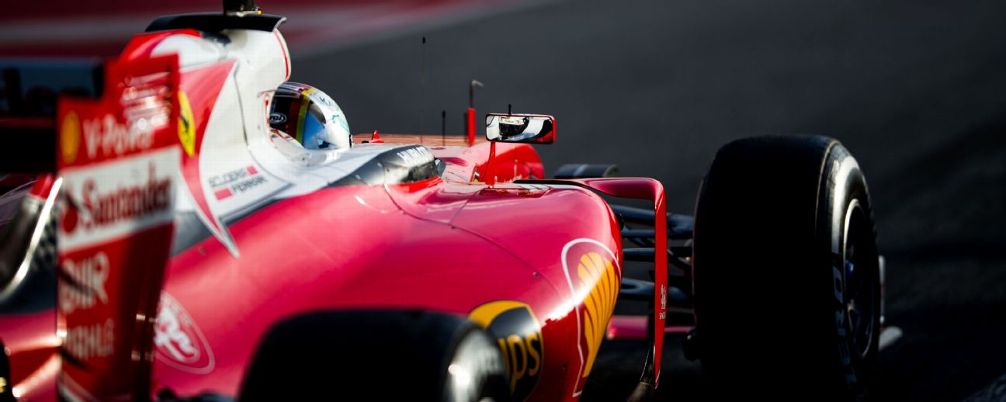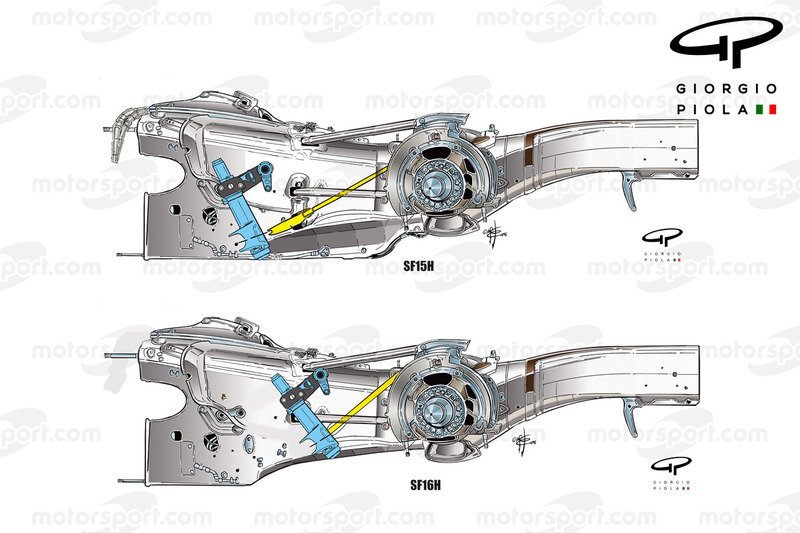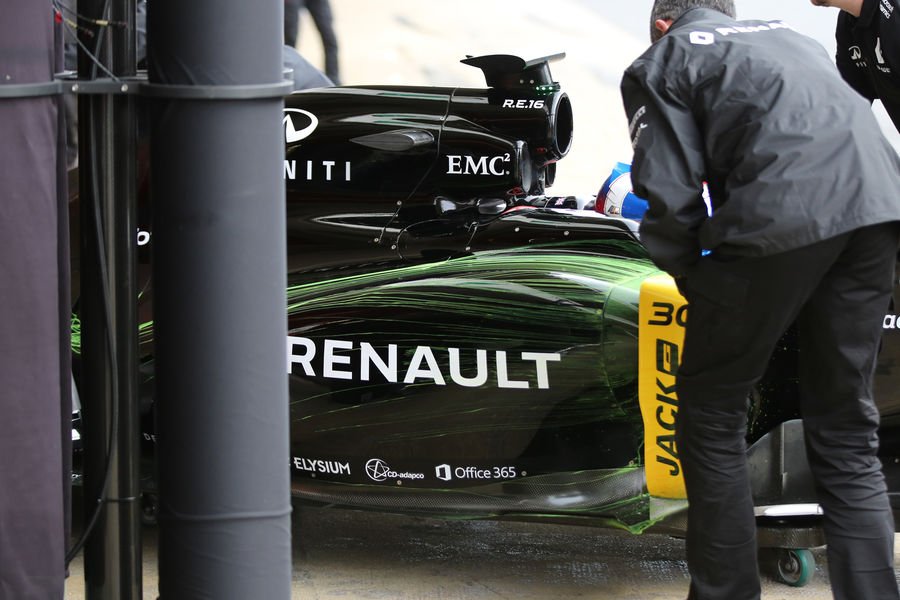- Login or Register
No account yet? Sign up

I think the problem is with the translation and more properly with semantic differences between Italian and English language and, what Turrini wrote (http://blog.quotidiano.net/turrini/2016 ... todt-jean/) and was correctly quoted by ripper is "Il musetto Rosso non è definitivo, ma non è detto sarà cambiato" could be better translated as "the current nose of the SF16-H is not how it was meant to be, but probably it won't be changed."bhall II wrote:"According to Turrini, the current nose of the SF16-H is not the final version, but probably it won't be changed."
That sentence makes my head hurt.
According to Turrini, the current nose of the SF16-H is not the final version, but probably it's the final version.
Even then, the results weren't exactly stellar...ferkan wrote:RBR was rumored to have had dozens of failed crash test until they came up with nose that they still race with.
Christian Horner, May 8, 2015 wrote:You can see by the aggressively short nature of it that it's been quite a technical challenge. It's a great credit to the guys that actually did it to get it through [the crash test].
It's not a negative at all - it's an engineering masterpiece that they've managed to achieve.
The regulations are so restricted that development in certain areas is well into the range of diminishing returns at this point. For instance, I'd be surprised if Mercedes' new S-duct has an appreciable effect outside the wind tunnel. It's just one of those things you do because you can.Daniel Ricciardo, May 10, 2015 wrote:We came here with upgrades this weekend but they didn’t give us what we were expecting, so that’s something we’ll keep working on.


Yes I think You are right. Ferrari wants air to go around sidepod. At first look it looks like that top leading edge creates massive drag but instead it is design to minimize air flow over side pod. Simple but good if it works.bhall II wrote:Even then, the results weren't exactly stellar...ferkan wrote:RBR was rumored to have had dozens of failed crash test until they came up with nose that they still race with.
Christian Horner, May 8, 2015 wrote:You can see by the aggressively short nature of it that it's been quite a technical challenge. It's a great credit to the guys that actually did it to get it through [the crash test].
It's not a negative at all - it's an engineering masterpiece that they've managed to achieve.The regulations are so restricted that development in certain areas is well into the range of diminishing returns at this point. For instance, I'd be surprised if Mercedes' new S-duct has an appreciable effect outside the wind tunnel. It's just one of those things you do because you can.Daniel Ricciardo, May 10, 2015 wrote:We came here with upgrades this weekend but they didn’t give us what we were expecting, so that’s something we’ll keep working on.
All of which is to say, the nose situation isn't ideal, but it's probably not a big deal.
And just to sorta drag this back on topic a bit, one of my earlier misgivings about the design of SF16-H was the apparent abandonment of several concepts from SF15-T that were copied by others this season, like the treatment on the sidepod's top leading edge...
http://s15.postimg.org/va9ug48p7/mercedes_wo7_f.jpg
I've since realized that it has not been abandoned; it's been improved.
http://s10.postimg.org/v1qqik5o9/image_8_2000x1125.jpg
The idea is to minimize air flow over the sidepod, where it would generate lift, and instead direct it around the sidepod, which is a route to the back of the car that doesn't generate lift. The new design is both lower, for reduced frontal area, and it seems to direct a greater percentage of air flow around the sidepod.
I think this car has a few secrets to tell.
Fer.Fan wrote:Yes I think You are right. Ferrari wants air to go around sidepod. At first look it looks like that top leading edge creates massive drag but instead it is design to minimize air flow over side pod. Simple but good if it works.bhall II wrote:Even then, the results weren't exactly stellar...ferkan wrote:RBR was rumored to have had dozens of failed crash test until they came up with nose that they still race with.
Christian Horner, May 8, 2015 wrote:You can see by the aggressively short nature of it that it's been quite a technical challenge. It's a great credit to the guys that actually did it to get it through [the crash test].
It's not a negative at all - it's an engineering masterpiece that they've managed to achieve.The regulations are so restricted that development in certain areas is well into the range of diminishing returns at this point. For instance, I'd be surprised if Mercedes' new S-duct has an appreciable effect outside the wind tunnel. It's just one of those things you do because you can.Daniel Ricciardo, May 10, 2015 wrote:We came here with upgrades this weekend but they didn’t give us what we were expecting, so that’s something we’ll keep working on.
All of which is to say, the nose situation isn't ideal, but it's probably not a big deal.
And just to sorta drag this back on topic a bit, one of my earlier misgivings about the design of SF16-H was the apparent abandonment of several concepts from SF15-T that were copied by others this season, like the treatment on the sidepod's top leading edge...
http://s15.postimg.org/va9ug48p7/mercedes_wo7_f.jpg
I've since realized that it has not been abandoned; it's been improved.
http://s10.postimg.org/v1qqik5o9/image_8_2000x1125.jpg
The idea is to minimize air flow over the sidepod, where it would generate lift, and instead direct it around the sidepod, which is a route to the back of the car that doesn't generate lift. The new design is both lower, for reduced frontal area, and it seems to direct a greater percentage of air flow around the sidepod.
I think this car has a few secrets to tell.

Blackout wrote:The bottom part of the Ferrari gearbox is nicely raised, for the diffuser
http://img1.auto-motor-und-sport.de/Sau ... 931733.jpg

That's the same wing Kimi ran on day 1 of the second test.
It's about cleaning up the flow coming from the front wheel, separating it from flow coming around the undercut from the barge board. You can't stop air flow over the sidepods ; if you did that you'd be creating a vacuum which, of course, is a bad thing. (Not really a vacuum of course but an area in to which air will rush anyway.) These side pod treatments are about getting the right quality of air to go where you want it. The air will flow over the top of the sidepods - you can't stop that. You can try to ensure that the air going over the sidepods is "clean" in order to help the rear wing and the diffuser.bhall II wrote:.
http://s10.postimg.org/v1qqik5o9/image_8_2000x1125.jpg
The idea is to minimize air flow over the sidepod, where it would generate lift, and instead direct it around the sidepod, which is a route to the back of the car that doesn't generate lift. The new design is both lower, for reduced frontal area, and it seems to direct a greater percentage of air flow around the sidepod.
I think this car has a few secrets to tell.

How about cleaning up the masses of multiple reposts in this thread that just add masses of stuff to scroll through to find a line that basically says "I agree"?
Please try to restrict your comments to actual items that are on the SF 16-H.
The idea is the same as what's seen below. It just uses a pressure gradient instead of vortex generators....Just_a_fan wrote:It's about cleaning up the flow coming from the front wheel...

